Eizfan C2 USB Charger
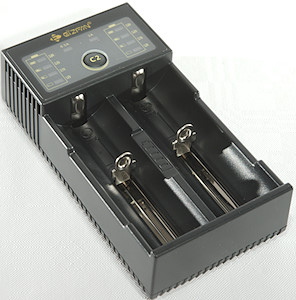

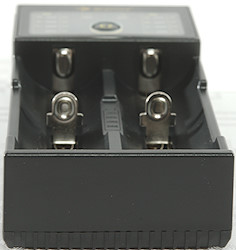
This charger model is very common, here it is in a Eizfan version. As usual this model is very versatile.
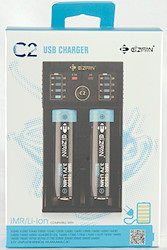

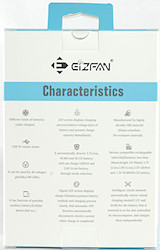

The box contained the charger, usb cable and a instruction sheet.
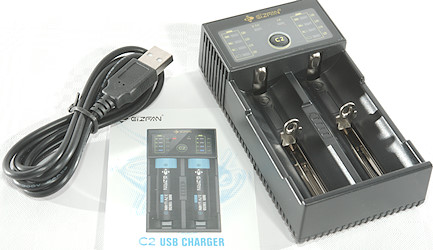
The pack contained the charger and a usb cable.
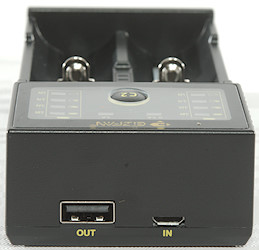
The charger is powered from micro usb and has a full size usb connector for power bank output.

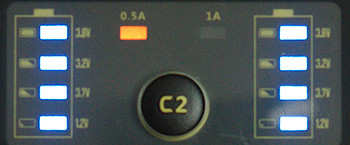
The charger has two red leds to show selected current and two rows of four blue leds to select voltage and show battery level.
The button has multiple functions:
When a battery is put into a powered charger, it can be used to select LiIon voltage (NiMH is selected automatic).
When charger is powered a long press (2 seconds) will change between 0.5A and 1A charge current.
A fast click when charging will show the selected battery type.
When used as a power bank a press on the button will turn the usb power on.
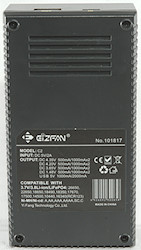
The back of the charger list the main specifications in a easy readable font.
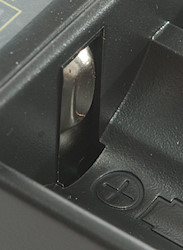
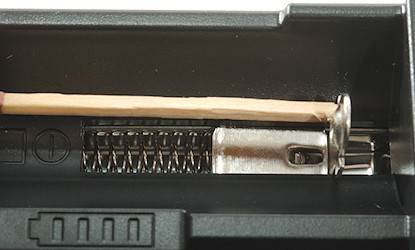
The charger uses the typical slider construction, it can handle batteries from 31mm to 71mm, this mean nearly all battery, except some very long protected types.


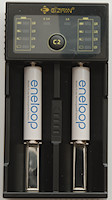
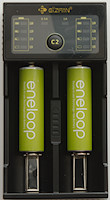
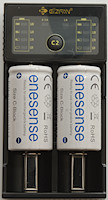
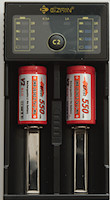
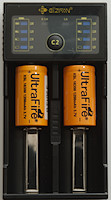
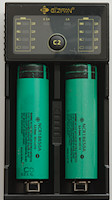
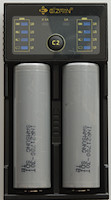
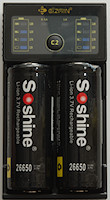
The charger can handle 70mm long batteries, inclusive flat top cells, this means most protected cells.
Measurements charger
- LiIon and NiMH Batteries will be discharged with less than 0.1mA when power is off.
- Charges LiIon batteries with 1mA when connected to power.
- When battery is 0 volt the charger will charge with 3mA, this is enough to reset a protection.
- From 0.2 volt on the battery the charger will recognize it and start charging.
- Between 0.2 volt and 1.6 volt a battery is assumed to be NiMH.
- Between 1.6 volt and 2.2 volt the charger will charge with less than 2mA and not allow selection of battery type.
- Above 2.2 volt a battery is assumed to be LiIon.
- Charger will not restart if battery voltage drops.
- Charger will restart charging after power loss, or battery insertion.
- Power consumption when idle without batteries is 32mA from USB.
Charging 4.20 volt LiIon

A fairly good CC/CV charge curve with about 140mA termination current. It looks like the regulation is slight unstable in the CV phase, but the charge is fine enough.

The second slot is similar, but started on CV phase earlier.
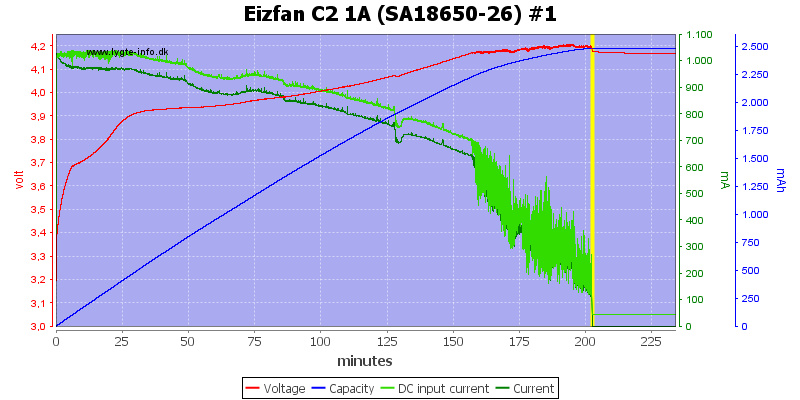
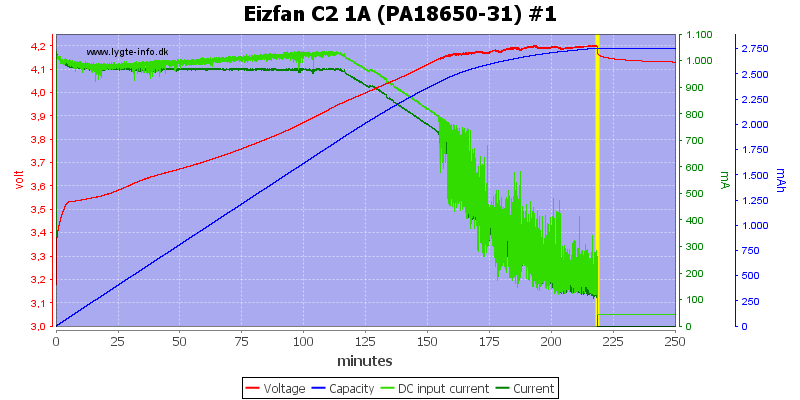
No surprises with these cell.

This old cell went directly to CV phase as expected.
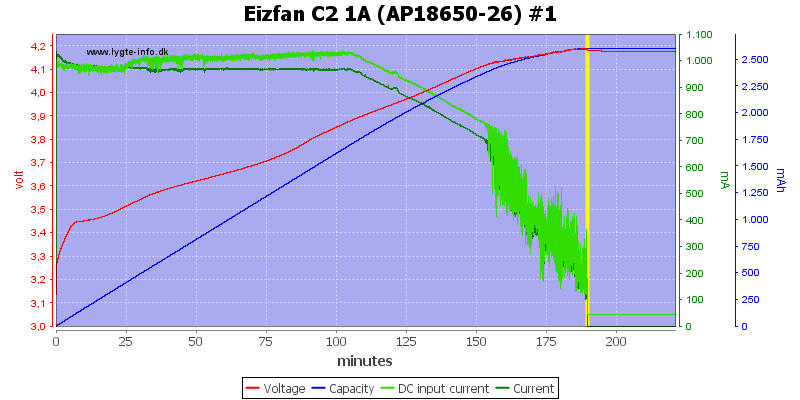
The charge curve for a newer cells looks very good.
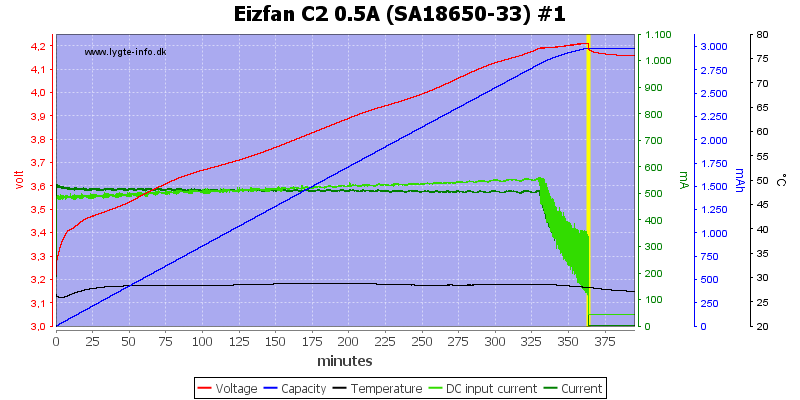
The 0.5A curve also looks good.

This 14500 cell is charged nicely with 0.5A current, the termination current is about the same.
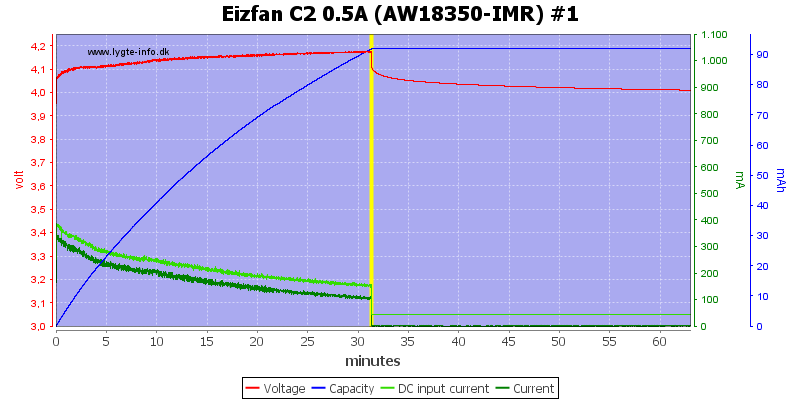
This very old and worn down cell did get charged a bit.
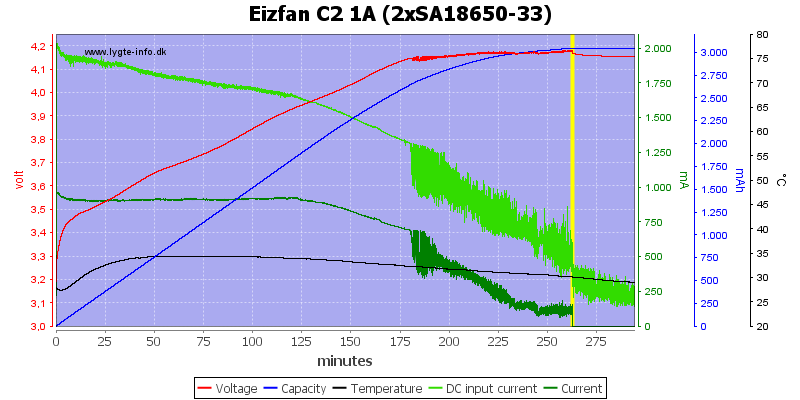
With two cells the charger current is slightly lower, but the cells are charged nicely.
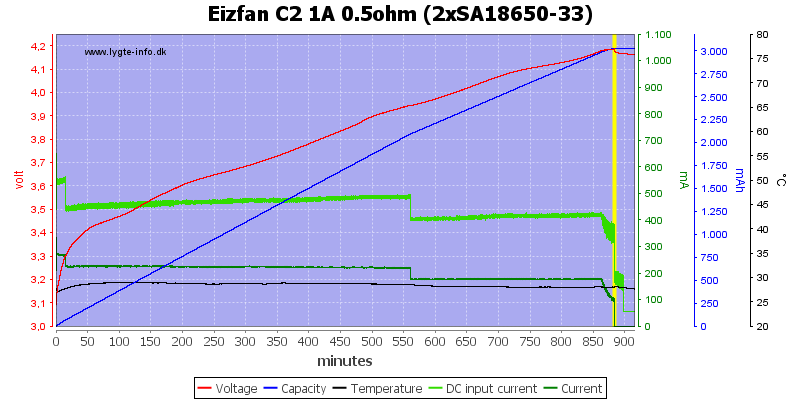
Adding a resistor in series with the usb power supply to simulate a long cable or weak supply did not prevent the charger from doing a good job, but it needed a lot more time.
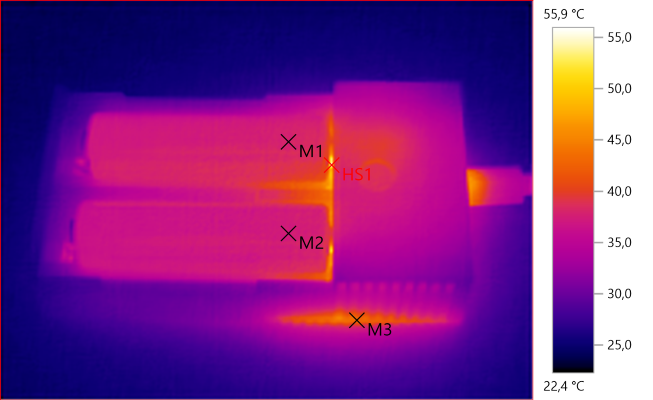
M1: 37.7°C, M2: 37.1°C, M3: 43.0°C, HS1: 55.9°C
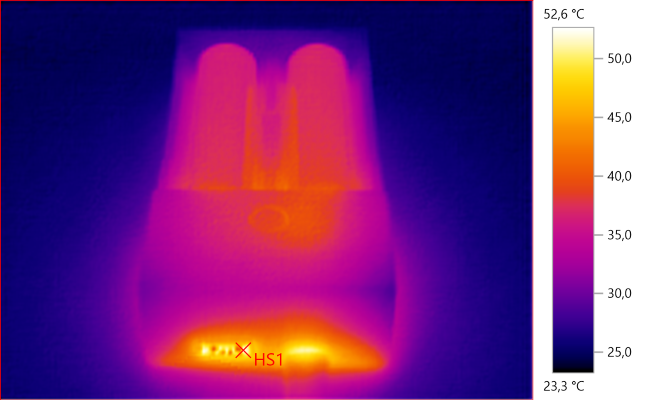
HS1: 52.6°C
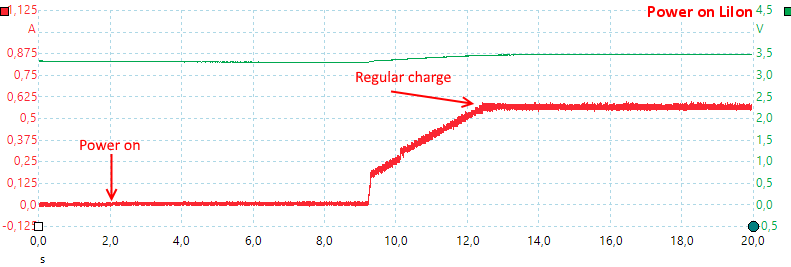
The charger needs some time to start up, this is because it is waiting for voltage selection.
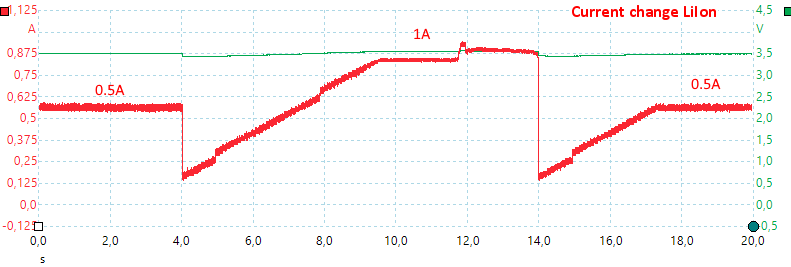
There is no problem with changing current while charging.
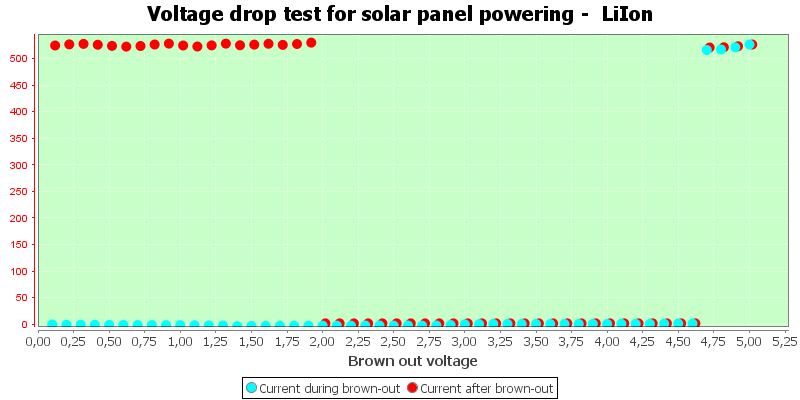
The charger is not very good with a unstable power supply.
Charging 4.35 volt LiIon
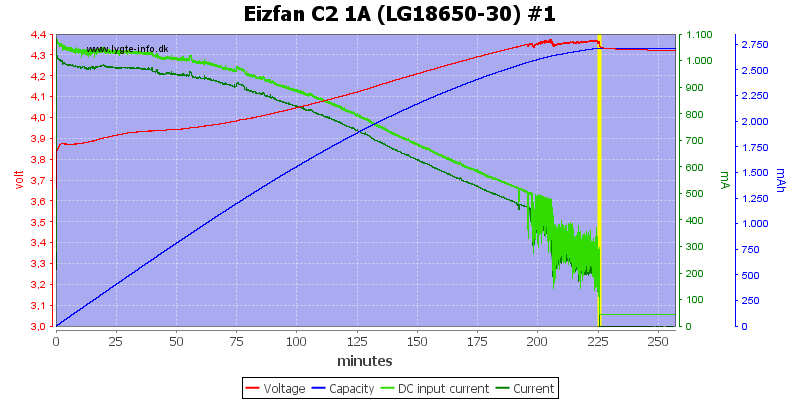
The 4.35 volt charge works as expected.
Charging 3.60 volt LiIon
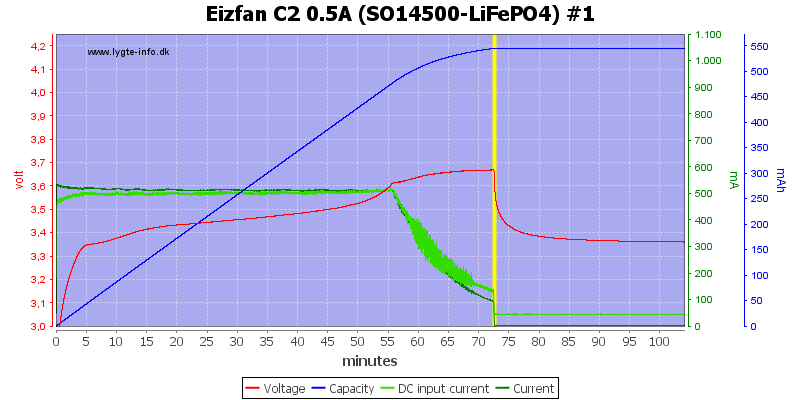
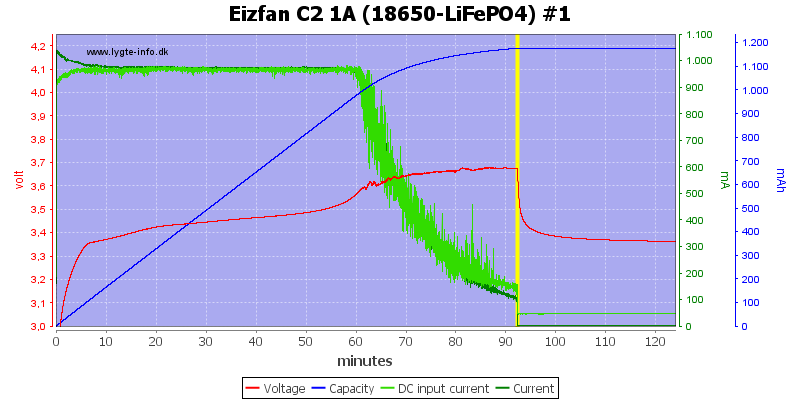
Both LiFePO4 cells is charged fine.
Charging NiMH
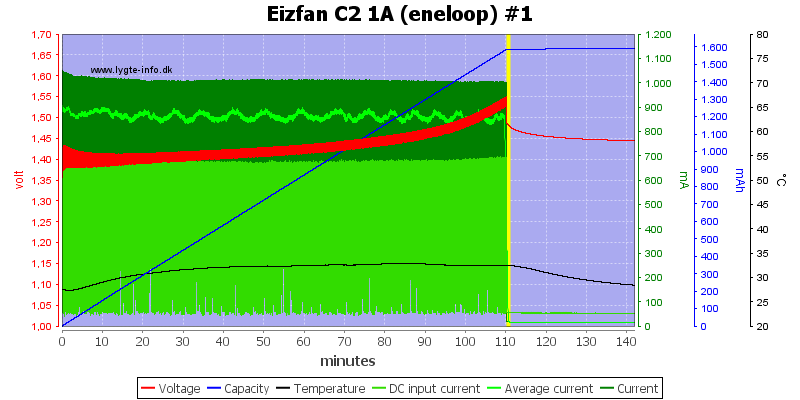
The termination is on voltage with this cell and there is no top-off charge, this means the last few percent charge is missing.
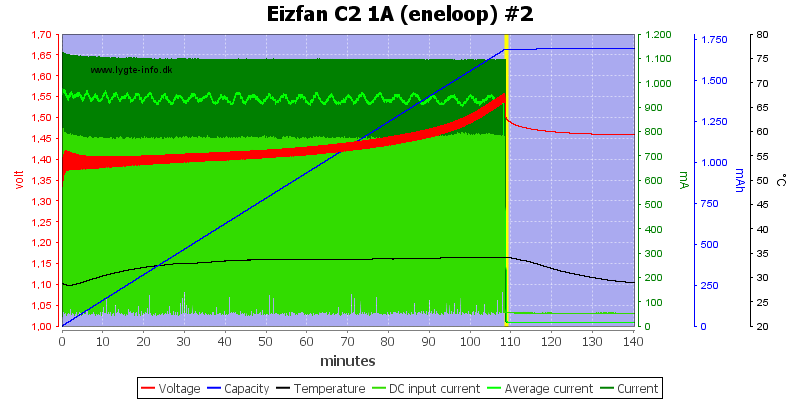
The second slot is similar.
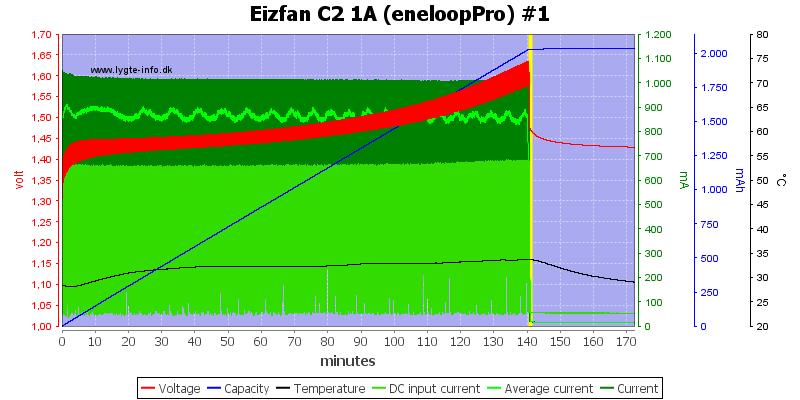

Both the eneloopPro and the leise looks to use voltage termination, but the voltage varies between them?
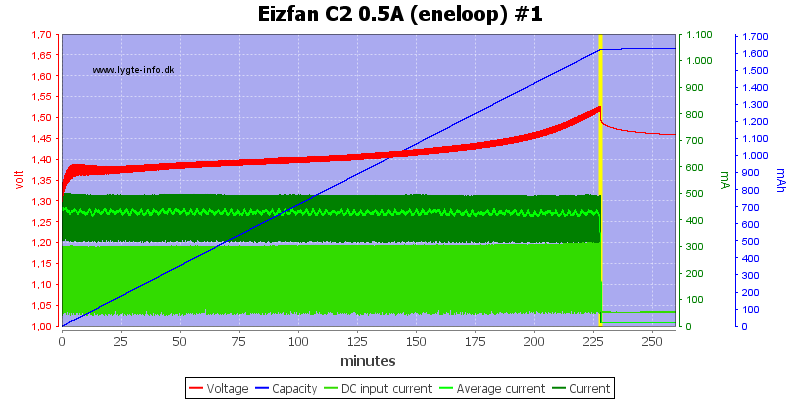
Using 0.5A charge current also terminates fine.
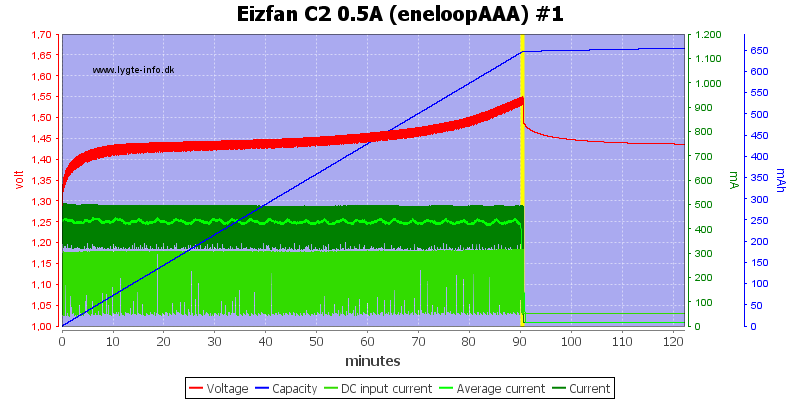
And, of course, also on AAA cells.
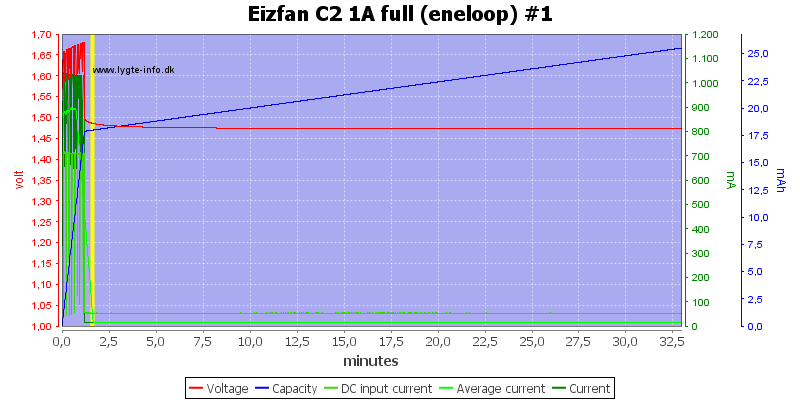
This is a very fast detection of a full cell.
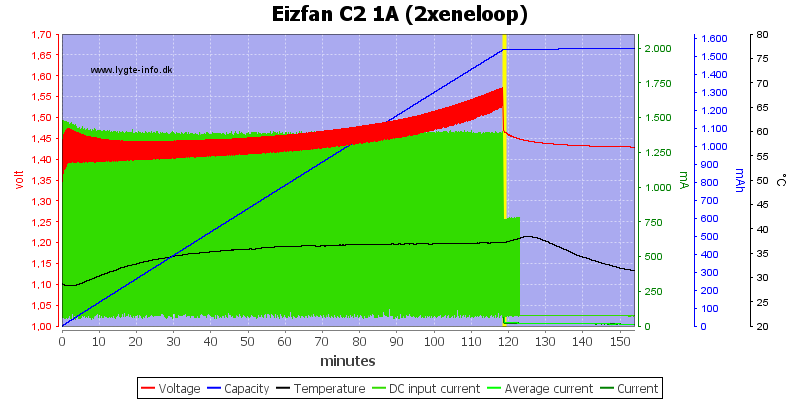
There is no problem handling two eneloops. This time there is a nice temperature raise at the end, this means at least the second cell (The one with the temperature sensor) is fully charged.
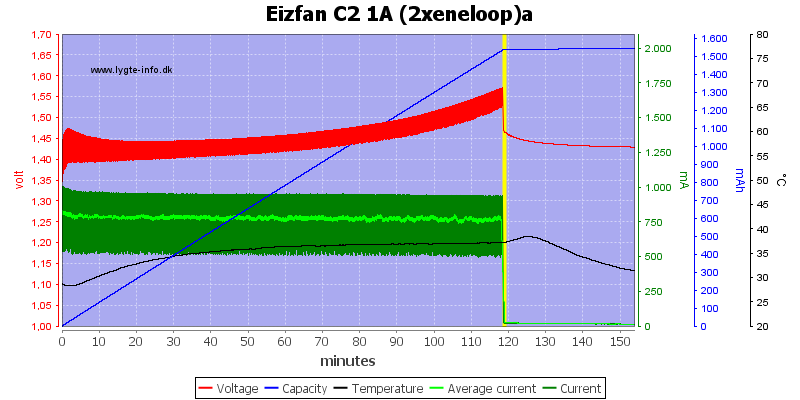
Same curve as above, but without the input current.
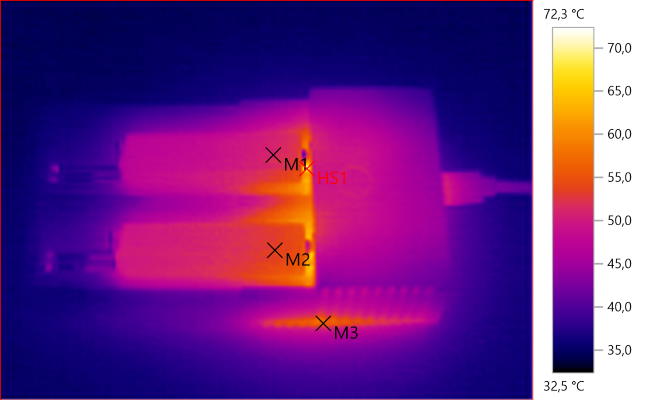
M1: 51.2°C, M2: 53.5°C, M3: 56.2°C, HS1: 72.3°C
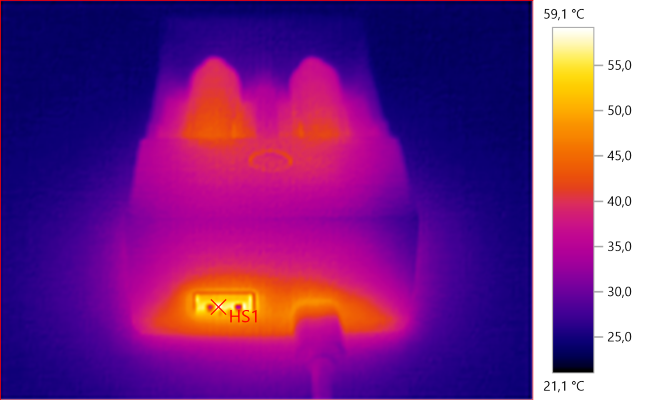
HS1: 59.1°C
The charger gets warmer with NiMH batteries, it is a bit on the warm side.
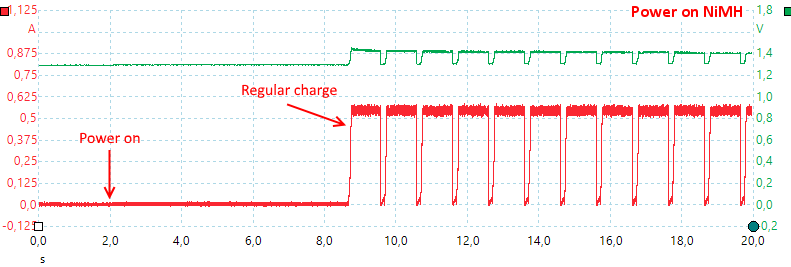
The charger is faster to start with NiMH.
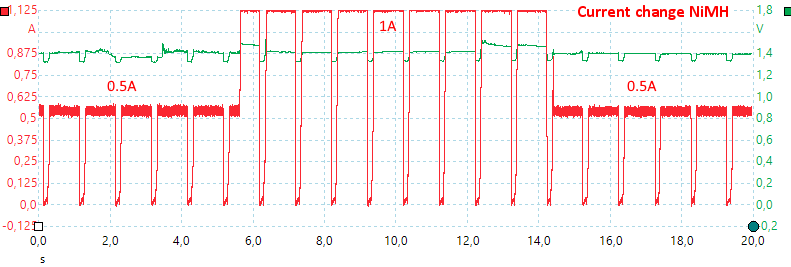
There is no problem with changing current while charging. The charger uses the typical pulsing, where it can measure voltage with current off.
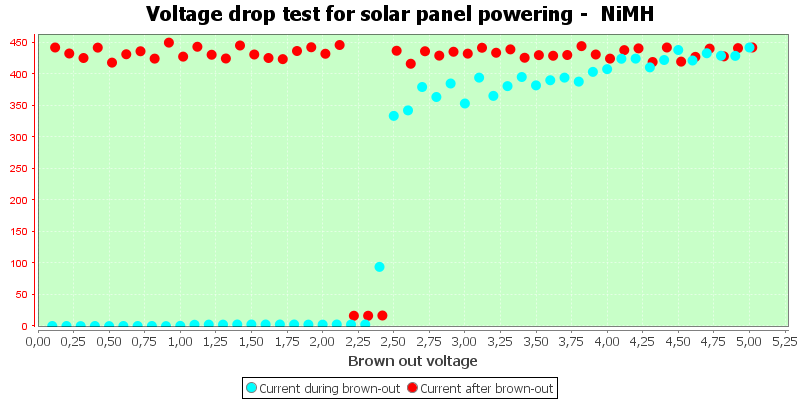
Also with NiMH the charger has problems with unstable voltage.
Power bank
No testing of USB, it did not work on the charger I got.
I got a new charger with a working power bank function, it is tested here
Conclusion
As a charger it works fine with both LiIon and NiMH, but the USB did not work due to a production fault.
As I charger it is good and from the supplementary review I can see that the power bank function also is good.
Notes
The charger was supplied by Eizfan (Efan) for review.
Here is an explanation on how I did the above charge curves: How do I test a charger
Read more about how I test USB power supplies/charger
























































